News and Highlights
This is a list of past iUTAH EPSCoR news from 2012 to 2018.
July 17, 2017
USU Symposium Concludes 5-year, NSF-funded Water Science Effort
While attending the final iUTAH Symposium held July 13 and 14, Kevin Opsahl, Herald Journal reporter, highlighted these insights about the project’s origins and impact on the local community in northern Utah. He starts by saying “USU professor Jeff Horsburgh remembers being on a committee years ago with his colleagues from USU and other Utah schools trying to come up with a proposal to get money from the National Science Foundation.
'It was really kind of interesting. We were trying to feel out people from the other institutions because there can only be one proposal like this from the state when we became eligible for this pot of funding from NSF,' said Horsburgh, assistant professor of civil and environmental engineering, before the iUTAH Symposium, July 13 and 14, at Utah State University. 'We emerged with a great proposal.'”
The article also talked with Project Director Michelle Baker who said “ ‘Water is one of our most limited resources for our economic development and wellbeing of Utah’s population,’ she said. ‘Our goal is to really enable people who are interested in science for Utah’s water future. We have programs to stimulate research discovery and training students.’ Baker believes iUTAH’s biggest accomplishment was ‘lowering barriers for collaboration across the state…. iUTAH doesn’t think of itself as a USU project,’ she said. ‘The people from USU who participated in it always tell me the thing they think is the best thing is getting to know their colleagues in Salt Lake City, Cedar City and things like that.’
Lance Houser, an engineer who works for Logan, remembers five years ago when engineers were trying to evaluate the city’s water quality without using extra staff. Houser heard about iUTAH and it turns out USU researchers were curious about many of the same things Logan officials were regarding the city’s water. So Logan provided USU areas in the city were researchers could do sampling and monitoring for water flow and quality.
Houser is pleased iUTAH has yielded results he can actually use. ‘It’s nice to have a program that’s focused on Utah instead of just back east,’ Houser said. ‘A lot of the decisions that have been made in the past have been made on studies and research done in … a lot of areas back East, decisions on management procedures. So, dealing with EPA, we now have another data source that says, ‘Maybe this is not the best approach in this part of the country.’ ”

June 28, 2017
Fighting Wildfires with Wildflowers
Southern Utah University and iUTAH researcher Jackie Grant has been in the news for her award of $68K from the Bureau of Land Management’s Colorado Plateau Native Plant Program to collect seeds from native plants for research. These seeds will also be used to restore plant life after wildfires destroy forests and seeds in the underlying soil.
A media release provided by Southern Utah University’s writer Lexi Carter quoted Grant as saying that “ ‘Native plants are important in Utah because this state is part of a fire-adapted ecosystem, which means that fires happen on a regular basis here,’ said Grant. ‘We need plants to return to the land as soon as possible after a fire to prevent heavy rains from eroding the soil and filling streams with sediment that kills fish. Although we often overlook them, native plants provide the groundwork for what makes this state special.’
The research conducted this summer builds on previous work Grant has done with iUTAH, the state’s National Science Foundation EPSCoR grant. Benefits extend to more than SUU students because water, outdoor recreation, hunting, fishing, and access to the state’s incredible scenery are important to most residents of Utah.
Grant’s collaborations with iUTAH, a statewide research infrastructure improvement grant aimed at water research, education, and outreach, have been recognized with both a Research Catalyst Grant and an Education and Outreach Catalyst grant. A third award for time-release gave Dr. Grant the time to write the proposal for seed collection. "Dr. Grant exemplifies what it means to be an 'engaged scholar,’ said Andy Leidolf, assistant director of iUTAH. “She embodies the objectives of iUTAH's research catalyst grant program and one of our project's core missions: to build capacity at primarily undergraduate institutions.”
‘We are now able to weave science, education and our research through multiple levels of the community while providing experiential learning opportunities to SUU students and recent graduates,’ said Grant. ‘The BLM grant is a fantastic opportunity for the university as it allows us to work with a federal program to provide economic and educational opportunities for the local community of Cedar City.’ ”
Press: SUU University News | The Spectrum
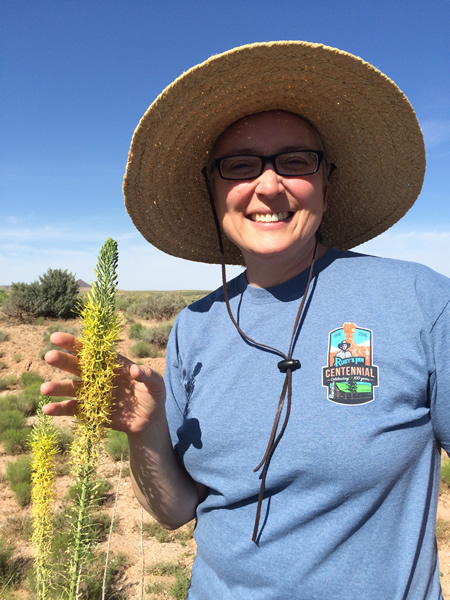
her seed collection and education program. Credit Jackie Grant
June 9, 2017
Digging into the Knowledge Gap of Dust
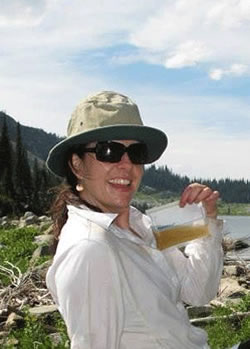
Utah State University and iUTAH researcher Janice Brahney has been in the news for her contributions to research on impact of dust on freshwater ecosystems.
A media release provided by the Utah State University writer Traci Hillyard said, “Dust may be as old as dirt, but in that dust is valuable information. Atmospheric dust is important because it consists mostly of tiny particles of soil, which contain nutrients, metals, clays and carbonates making dust a significant vector of biologically important compounds. According to current research, dust has a significant impact on the biological productivity in oceans, forests and freshwater lakes, which has the potential to increase carbon storage across these varied landscapes. Dust is what Janice Brahney, assistant professor of watershed science in the Utah State University Quinney College of Natural Resources really digs. Brahney’s research focuses on the impact of that dust on freshwater ecosystems.
‘The atmospheric transport of material is at present a large unmeasured component of critical biogeochemical cycles, like that of phosphorus,’ says Brahney. ‘These nutrients deposited with dust have significant effects on lake ecosystem function including productivity, species composition and carbon cycling.’ The shores of the Great Salt Lake, along with other playas and desert environments, are the leading contributors of dust in Utah.
‘Atmospheric dust arises from these low-elevation basins and is then deposited in mountain environments that act as natural barriers to transport,’ continues Brahney, who is interested in finding out how dust deposition impacts the nutrient availability and biology of affected lakes and rivers.”
The full study is available here.
Press: Utah State Today
May 25, 2017
Weather Patterns' Influence on Frost Timing
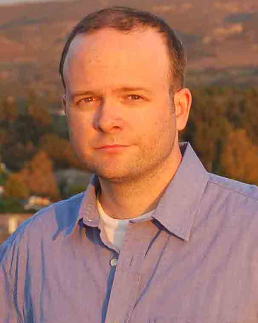
University of Utah and iUTAH researcher Court Strong has been in the news for his contributions to research on weather patterns.
A media release provided by the University of Utah’s science writer Paul Gabrielsen said, “The frost-free season in North America is approximately 10 days longer now than it was a century ago. In a new study, published in Nature Communications, researchers from the University of Utah and the U.S. Geological Survey parse the factors contributing to the timing of frost in the United States. Atmospheric circulation patterns, they found, were the dominant influence on frost timing, although the trend of globally warming temperatures played a part as well.
‘The frost-free season has been lengthening over the past century, and now we understand the changes in atmospheric circulation that are extremely strong in frost timing, even stronger than global warming,’ says University of Utah atmospheric sciences professor Court Strong.
Weather and climate are complex systems, with many factors affecting what the particular weather conditions might be in a certain place at a certain time. Previous research, says Gregory McCabe, of the USGS in Denver has focused on the role of large-scale phenomena like El Niño. ‘I don’t think anyone has broken it down to look at the circulations patterns specific to the timing of frost,’ McCabe says.”
Press: Popular Science | EurekaAlert! | Science Daily | Phys.org | Weather Underground | KUER Radio | KUSU Radio | UNews

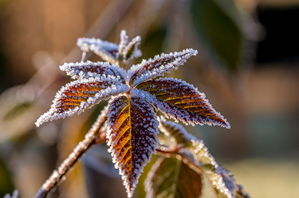
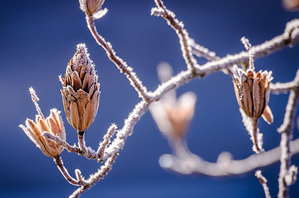
May 24, 2017
Partnerships Key to Water Data Management Statewide
Courtney Flint, iUTAH team leader, and a professor of sociology at Utah State University, recently published an op-ed piece in The Salt Lake Tribune. In it, she discusses iUTAH’s collaborations with state agencies, Weber Basin Water Conservancy District, and municipalities from Salt Lake, Cache, and Heber Valleys. She starts the piece by pointing out “A recent article and an editorial in The Salt Lake Tribune have cast doubt on the ability of Utah state agencies to accurately measure water use.
Our interactions with state agency staff suggest that they are interested in improving the availability of water use data, but have been limited mostly by state legislative funding allocations and restrictions on their authority to require submission of timely and accurate data.
As water resource researchers with iUTAH, a federally funded water project led by Utah State University researchers in collaboration with partners around the state, we would be the first to join others in saying that the better we know how water is distributed and used, the better we can help our state manage its water resources and achieve future water sustainability. Yet it is often municipalities, water districts and irrigation companies that actually make many of the critical water infrastructure development and distribution decisions.”

May 23, 2017
News Media Seek Sociologist's View on EPA Move Reducing Scientific Oversight
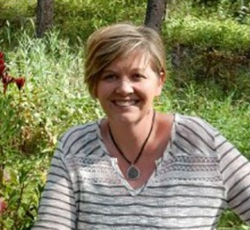
iUTAH researcher Courtney Flint was at the center of a “barrage of emails and calls from news reporters worldwide seeking her opinion of news that she would no longer be on a scientific board that advises the Environmental Protection Agency.”
A media release provided by Utah State University writer Janelle Hyatt said “Flint, a natural resource sociologist and professor in the Department of Sociology, Social Work and Anthropology, has been on the Board of Scientific Counselors of the EPA since 2014. In this position, she and her fellow scientists, who are among the top academic experts in the country, review the science upon which EPA regulations are developed and implemented.
Newly appointed EPA administrator Scott Pruitt recently announced that it would not be extending terms for some members of the 18-person board because of budget cuts and the fact that the EPA, according to a spokesman, wants to include more input from industry representatives who 'understand the impact of regulations.'
The EPA’s action has garnered wide attention for what the Washington Post calls 'the latest in a series of moves that could benefit industries whose pollution the government regulates.' As one of the five scientists targeted, Flint’s comments have been reported by the New York Times, the Washington Post and the Guardian. She’s given interviews to the Associated Press, Bloomberg, weather.com, ABC, CBC Radio Canada, Frontline, CNN and others.”
For more on Flint’s interviews, covered in over 95 news media outlets across the globe, visit one of the press links below.
Press: New York Times | Washington Post | The Guardian | CNN | SFGate |The Denver Post | The Telegraph | The Atlantic | New Republic | The Herald Journal | Utah State Today


